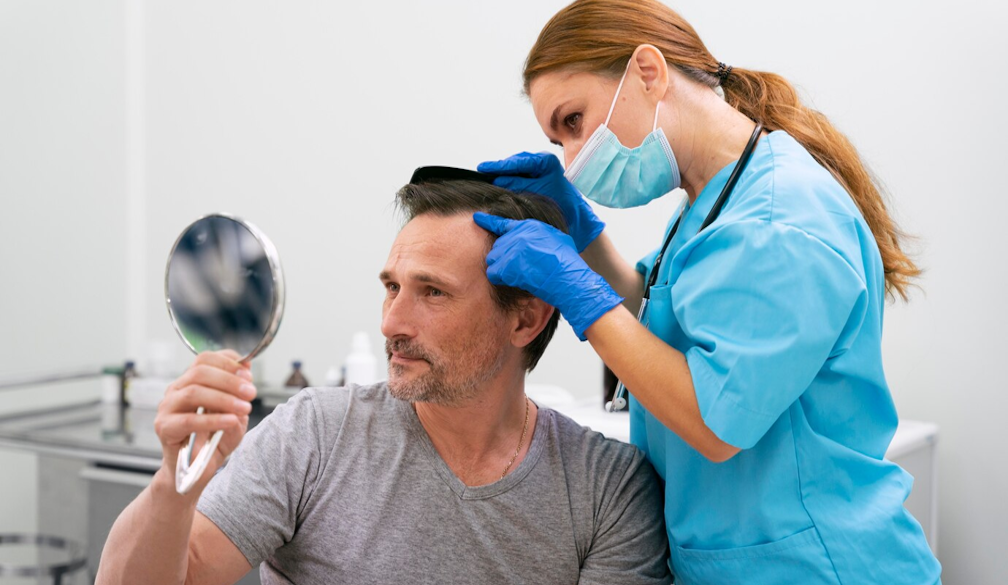Private clinics' peddling of unproven stem cell treatments is unsafe and unethical
- Written by Megan Munsie, Deputy Director - Centre for Stem Cell Systems and Head of Education, Ethics, Law & Community Awareness Unit, Stem Cells Australia, University of Melbourne
 Stem cells have saved thousands of lives thanks to their applications in cancer treatments. Many other uses peddled by private clinics are without evidence. from www.shutterstock.com
Stem cells have saved thousands of lives thanks to their applications in cancer treatments. Many other uses peddled by private clinics are without evidence. from www.shutterstock.comStem cell science is an area of medical research that continues to offer great promise. But as this week’s paper in Science Translational Medicine highlights, a growing number of clinics around the globe, including in Australia, are exploiting regulatory gaps to sell so-called stem cell treatments without evidence that what they offer is effective – or even safe.
Such unregulated direct-to-consumer advertising – typically of cells obtained using liposuction-like methods – not only places the health of individuals at risk, but could also undermine the legitimate development of stem cell-based therapies.
Many academic societies and professional medical organisations have raised concerns about these futile and often expensive cell therapies. Despite this, national regulators have typically been slow or ineffective in curtailing them.
As well as tighter regulations here, international regulators such as the World Health Organisation and the International Council on Harmonisation need to move on ensuring patients desperate for cures aren’t sold treatments with limited efficacy and unknown safety.
So what’s on offer?
Hundreds of stem cell clinics post online claims that they have been able to treat patients suffering from a wide range of conditions. These include osteoarthritis, pain, spinal cord injury, multiple sclerosis, diabetes and infertility. The websites are high on rhetoric of science – often using various accreditation, awards and other tokens to imply legitimacy – but low on proof that they work.
Rather than producing independently verified results, these clinics rely on patient testimonials or unsubstantiated claims of “improvement”. In so doing these shonky clinics understate the risks to patient health associated with these unproven stem cell-based interventions.
 Stem cell clinics often rely on anecdotes and patient ‘testimonials’.Screenshot, Swiss Medica website
Stem cell clinics often rely on anecdotes and patient ‘testimonials’.Screenshot, Swiss Medica websiteProperly administered informed consent is often overlooked or ignored, so patients can be misled about the likelihood of success. In addition to heavy financial burdens imposed on patients and their families, there is often an “opportunity cost” because the time wasted in receiving futile stem cells diverts patients away from proven medicines.
The many recent reports of adverse outcomes demonstrate the risks of receiving unproven cell therapies are not trivial. In the USA three women were blinded following experimental “stem cell” treatment for macular degeneration (a degenerative eye disease that can cause blindness). One man was rendered a quadriplegic following a stem cell intervention for stroke. And a woman whose family sought treatment for her dementia died in Australia.
 Many clinics make claims stem cell treatments are effective for a vast range of conditions, most of which there is limited evidence for.Screenshot, Stem Cell Therapy Plus website
Many clinics make claims stem cell treatments are effective for a vast range of conditions, most of which there is limited evidence for.Screenshot, Stem Cell Therapy Plus websiteOther notorious cases involving the deaths of patients include the German government shutting down the X-Cell Centre and the Italian government closing the Stamina Foundation it had previously supported.
What’s approved?
At present, the only recognised stem cell treatments are those utilising blood stem cells isolated from bone marrow, peripheral blood (the cellular components of blood such as red and white blood cells and platelets) or umbilical cord blood.
Hundreds of thousand of lives have been saved over the last half-century in patients with cancers such as leukaemia, lymphoma and multiple myeloma, as well as rare inherited immune and metabolic disorders.
A few types of cancer and autoimmune diseases may also benefit from blood stem cells in the context of chemotherapy. Different stem cells are also successfully used for corneal and skin grafting.
All other applications remain in the preclinical research phase or are just starting to be evaluated in clinical trials.
Further reading: Yes there’s hope, but treating spinal injuries with stem cells is not a reality yet
Often dismissed by for-profit clinics as “red tape” hampering progress, the rigour of clinical trials allows for the collection of impartial evidence. Such information is usually required before a new drug or medical device is released into the marketplace. Unfortunately, in the case of for-profit stem cell clinics, their marketing has gazumped the scientific evidence.
 Marketing regulation is needed so private clinics can’t make claims without evidence.Screenshot, ASC Treatment website
Marketing regulation is needed so private clinics can’t make claims without evidence.Screenshot, ASC Treatment websiteSo what can be done?
Action is required on many fronts. Regulators at both an international and national level need to tackle regulatory loopholes and challenge unfounded marketing claims of businesses selling unproven stem cell interventions.
Researchers need to more clearly communicate their findings and the necessary next steps to responsibly take their science from the laboratory to the clinic. And they should acknowledge that this will take time.
Patients and their loved ones must be encouraged to seek advice from a trained reputable health care professional, someone who knows their medical history. They should think twice if someone is offering a treatment outside standards of practice.
The stakes are too high not to have these difficult conversations. If a stem cell treatment sounds too good to be true, it probably is.
For more information on recognised stem cell treatments visit the National Stem Cell Foundation of Australia and Stem Cells Australia, Choice Australia, EuroStemCell, International Society for Stem Cell Research, and International Society for Cellular Therapy.
Megan Munsie receives funding from the Australian Research Council. She is affiliated with the International Society for Stem Cell Research, Australasian Society for Stem Cell Research and the International Society for Cellular Therapy.
John Rasko receives funding from the Brocher Foundation and Cure The Future.
Authors: Megan Munsie, Deputy Director - Centre for Stem Cell Systems and Head of Education, Ethics, Law & Community Awareness Unit, Stem Cells Australia, University of Melbourne





